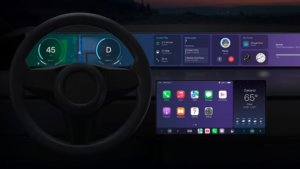Last Week on My Mac: Scary hasty
It was a novel idea: a Hallowe’en Event, timed when most of Europe had already gone to bed, announcing three-quarters of the new M3 chip range that would previously have taken place in stages. They are scary fast, but seemingly launched in scary haste, leaving Apple to fix their problems in macOS updates last week, just as the first owners of M3 Macs were in the midst of unboxing.
Meanwhile, the rest of us were left puzzled. Sonoma 14.1.1 apparently contains “important bug fixes and security updates”, but Apple wouldn’t tell us what they are. Ventura 13.6.2 is only available for a limited range of models, and Apple again refuses to explain what it’s for.
The best answer that I can offer is that those two macOS updates fix at least three separate problems, each of Apple’s own making.
M3 muddle
It took Apple a full eleven months to progress from the original M1 chip to M1 Pro and Max, and seven months from the first M2 to M2 Pro and Max, yet those three variants of the M3 were released on the same day. It looks now as if basic M3 models were being built well before the release of macOS Sonoma on 26 September 2023, most probably back in July when macOS 13.5 was released. Whether Apple had ever intended to release those in the summer remains speculation.
As those initial M3 MacBook Pro and iMac models were built so long ago, they couldn’t ship with Sonoma, but had to make do with Ventura 13.5 instead. In its previous autumn/fall Apple silicon releases, Apple has pre-installed a late version of the forthcoming major version of macOS. Although that has sufficed, it required early adopters to rush straight into a macOS update before they encountered the serious bugs in what was still a beta-release of macOS.
This time, as 13.5 was a stable release, there should have been no problems with this strategy, if only those new M3 models had been supported by subsequent updates to macOS 13.x and Sonoma itself. That was overlooked in the scary fastness, and when unboxed those brand new Macs were locked in macOS 13.5 and couldn’t be updated beyond that. These macOS 13.6.2 and Sonoma 14.1.1 updates rectify that embarrassing error, for both the new MacBook Pro and iMac models that are being delivered with 13.5 pre-installed.
MacBook Pro black screens
Apple also had a severe bug outstanding from the previous macOS updates that needed an urgent fix. In certain display configurations, at least, recent MacBook Pro models could get stuck during that update, showing a black screen of death. Of course, Apple doesn’t seem to have acknowledged that bug, but needed to release revised updates to macOS 14.1 and 13.6.1 to address it. That appears to be why 13.6.2 is available for MacBook Pro models from 2021 onwards, and not just the new M3 models.
More bugs
When I analysed the differences between macOS 14.1 and 14.1.1, the only significant change I could find was a single build number increment in the QuartzCore framework, which seemed strange. Apparently, there have been reports that macOS 14.1 broke part of the interface of Adobe Photoshop, and it’s now thought that bug was fixed in 14.1.1.
Looking back at 14.1, its QuartzCore framework build number had gone from 1049.40 in macOS 14.0 to 1109.2, although there had been no change in version number. The 14.1.1 update incremented that to build version 1109.3. As updates go, that’s a very small change, but it stands out against the thousands of unchanged components of /System/Library in 14.1.1.
Security?
Apple hasn’t been forthcoming in telling us what either of these updates brought, although that for 14.1.1 is explicitly stated as containing “security updates”. Turn to Apple’s security release notes, and although both 14.1.1 and 13.6.2 are listed, neither has any “published CVE entries”. Whether that will change in the future is, like everything else about these macOS updates, speculation.
Release notes
Once again Apple is a sitting duck over its lamentable lack of documentation. Telling us that these updates contain “important bug fixes and security updates” simply isn’t good enough. But for once I wonder if those preparing these updates were as much in the dark as we are. With the secrecy surrounding the release of new M3 Macs, it wouldn’t surprise me if those responsible for documenting these updates were as surprised as we were when watching Apple’s Scary Fast event. Perhaps a little less haste, less Chinese whispers, and Apple could have spared itself the embarrassment.


